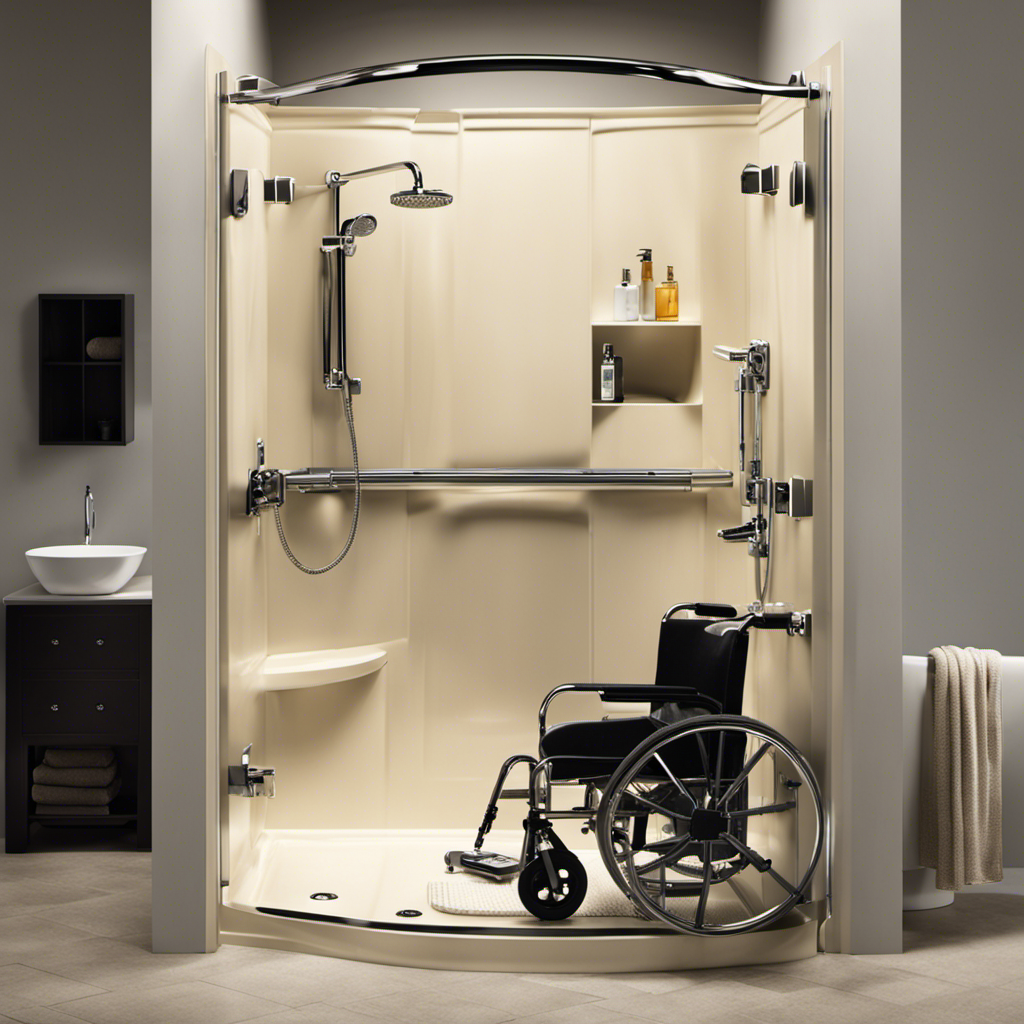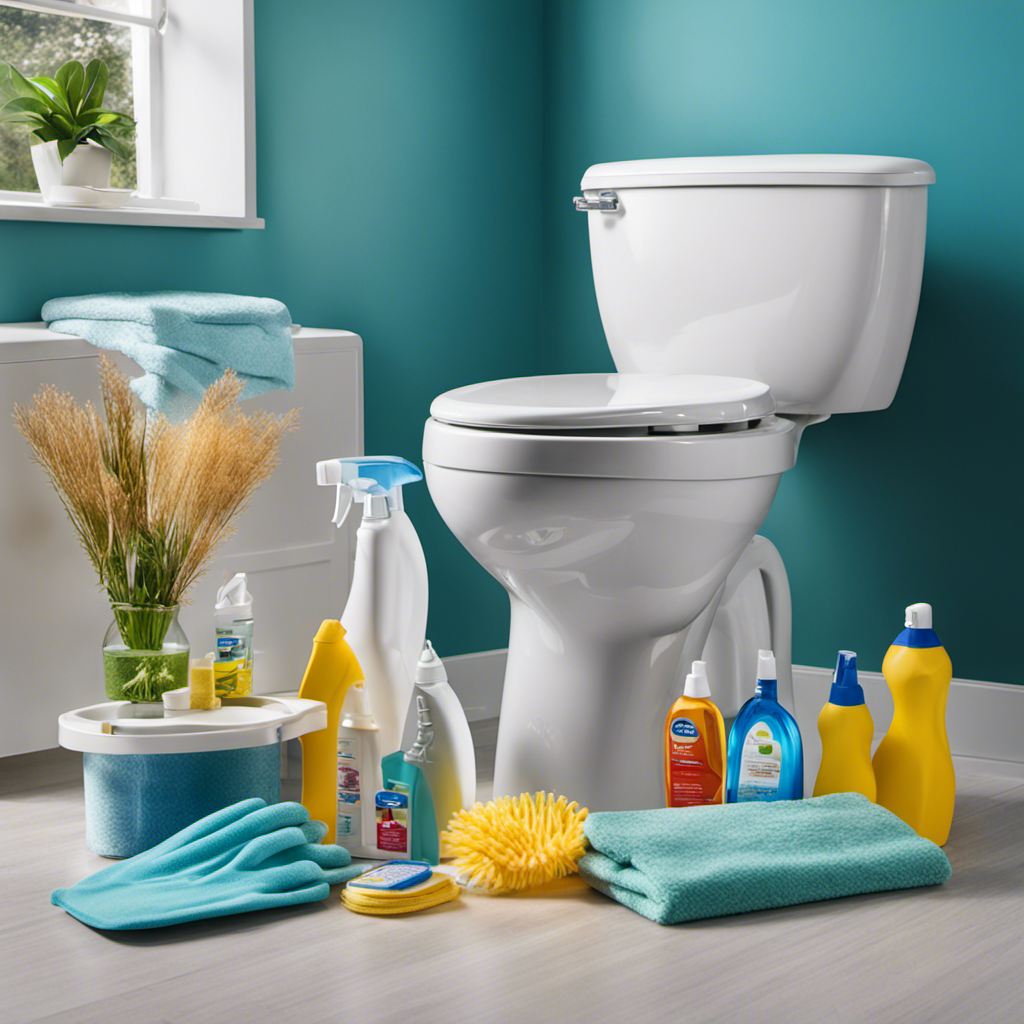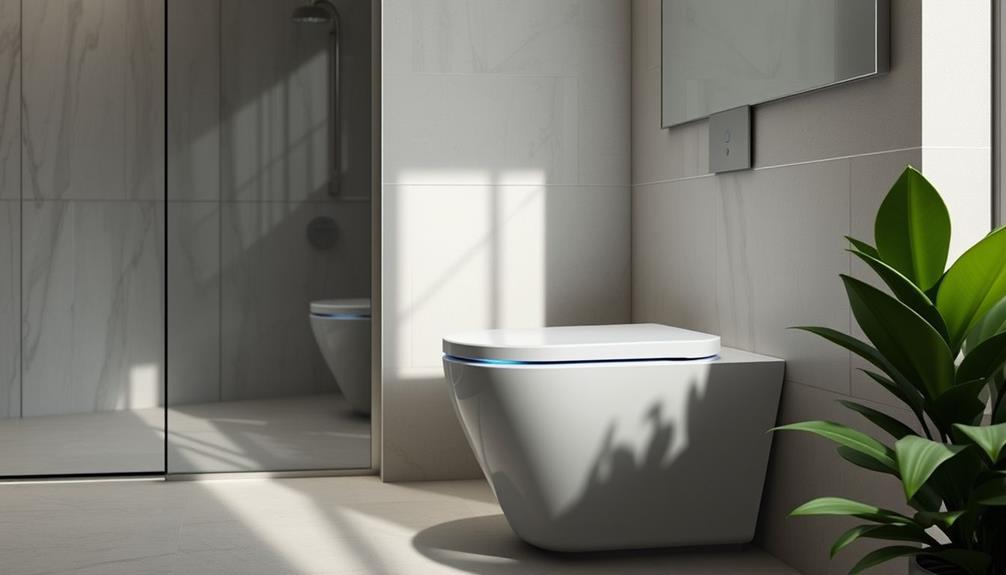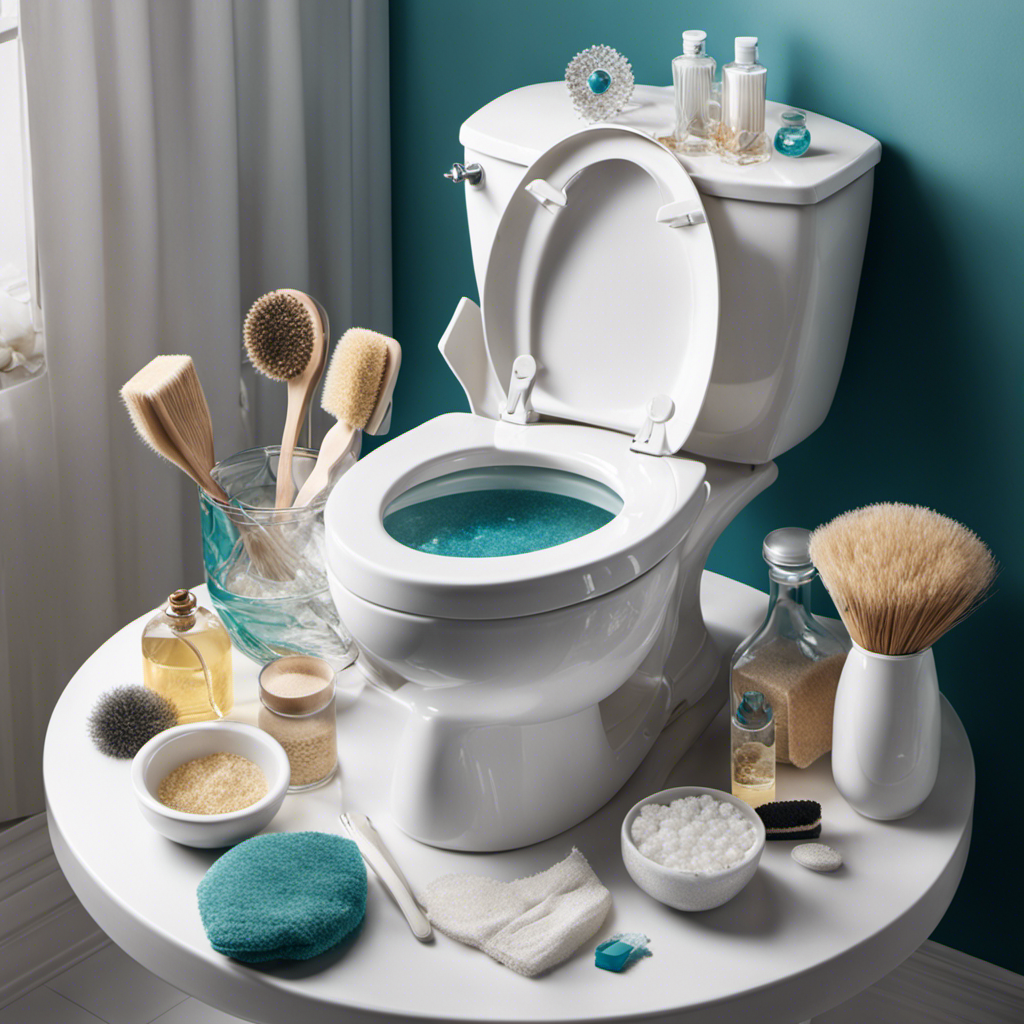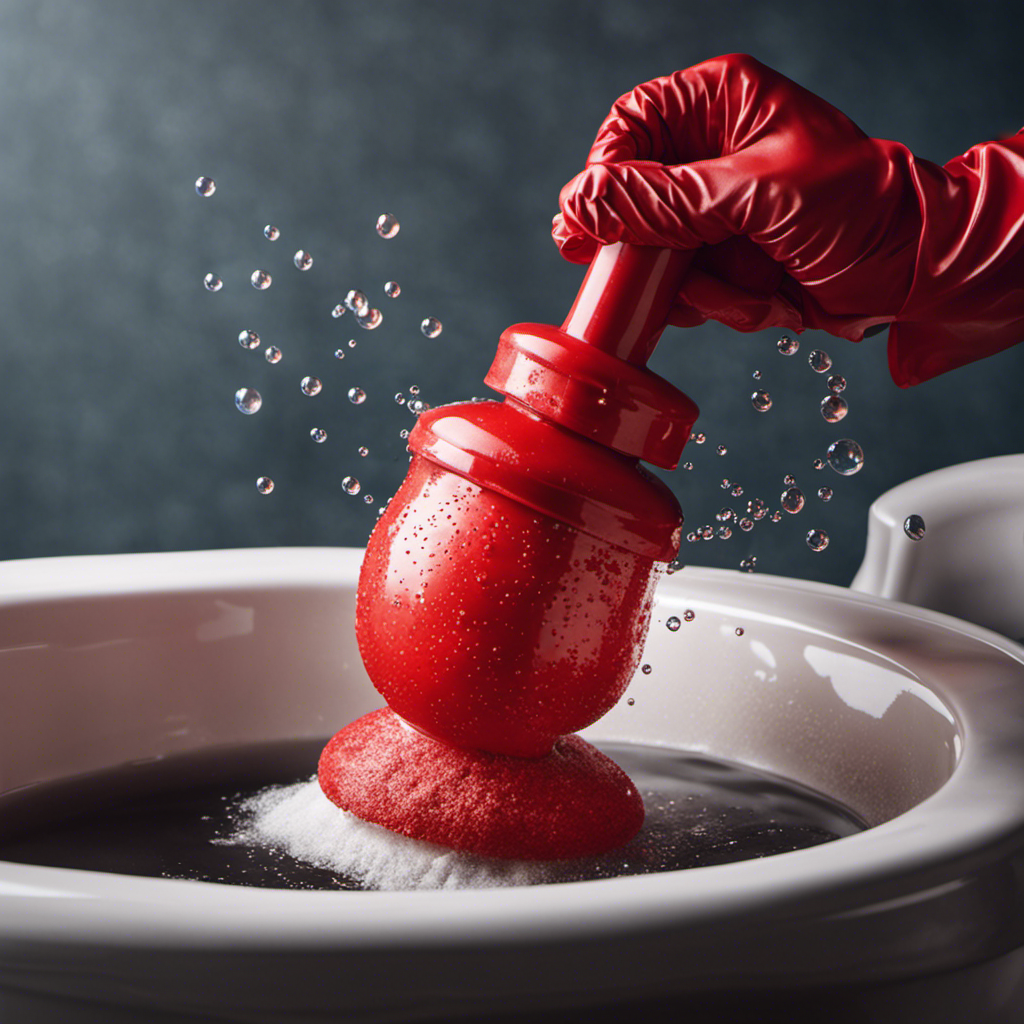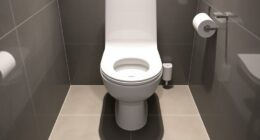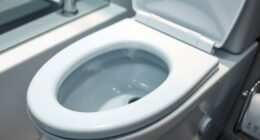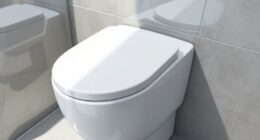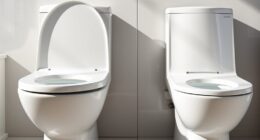I’ve always believed that a bathroom should be a space that provides comfort and convenience for everyone, regardless of their abilities. That’s why understanding the importance of ADA-compliant shower valve height is crucial.
By following ADA standards, we can ensure that individuals with disabilities have equal access to showers, promoting independence and control. With the right shower valve height, we can enhance overall bathroom accessibility, making it a space where everyone can feel welcome and empowered.
Let’s dive into the details and explore how ADA compliance can truly enhance bathroom accessibility.
Key Takeaways
- ADA compliance in bathroom design ensures equal opportunity for people with disabilities.
- ADA-compliant shower valve height should be installed between 38 inches and 48 inches above the shower floor.
- Accurate measurement of shower valve height is crucial for ADA compliance.
- ADA-compliant installations consider various factors such as space, clearance, and other components like showerheads, grab bars, and shower seats.
The Impact of ADA Compliance on Bathroom Accessibility
I understand the impact that ADA compliance has on bathroom accessibility, as it ensures equal opportunity for individuals with disabilities to use facilities with ease.
ADA compliance not only affects the functionality of bathrooms but also the aesthetics. Incorporating ADA guidelines into bathroom design can ensure that the space is both accessible and visually appealing.
For example, installing an ADA-compliant shower valve can enhance the overall look of the bathroom while providing easy access for individuals with disabilities. However, it is important to consider the cost of ADA-compliant shower valve installations.
While these installations may require some initial investment, they are essential for creating an inclusive and accessible bathroom environment. The long-term benefits of ADA compliance far outweigh the upfront costs, as it promotes equal opportunity and independence for individuals with disabilities.
Understanding the Significance of ADA-Compliant Shower Valve Height
Accurate measurement ensures that the shower valve meets the necessary requirements for individuals with disabilities. When it comes to ADA-compliant shower valve height, there are a few important design considerations that enhance the user experience:
- Proper shower valve height allows individuals with disabilities to have independence and control in their shower experience.
- Measuring shower valve height accurately ensures easy accessibility and usability for users of different heights and mobility levels.
- ADA-compliant installation considerations, such as space and clearance requirements, ensure compliance with guidelines and enhance comfort and usability.
Understanding the significance of ADA-compliant shower valve height is crucial for enhancing bathroom accessibility. By following the ADA Standards for Accessible Design, individuals with disabilities can enjoy a shower experience that meets their needs and promotes independence.
The Role of ADA Standards in Promoting Independence in Showers
Following ADA standards ensures that individuals with disabilities can have independence and control in their shower experience. The impact of ADA standards on shower usability is significant, as it promotes accessibility and inclusivity for all users. ADA-compliant showers are designed with the importance of independence in mind, providing features that cater to the specific needs of individuals with disabilities. These standards ensure that shower valve height, among other factors, is properly addressed to enhance usability. By adhering to ADA guidelines, shower valves are installed at the appropriate height, allowing individuals with disabilities to easily reach and operate them. This level of accessibility empowers individuals to have control over their shower experience, promoting independence and a sense of self-sufficiency. The incorporation of ADA standards in shower design greatly improves the overall usability and inclusivity of bathroom spaces.
| ADA Standards Benefits |
|---|
| Promotes independence |
| Enhances usability |
| Ensures accessibility |
| Fosters inclusivity |
Achieving Accessible Shower Design: ADA Shower Valve Height Requirements
Measuring the distance from the floor of the shower is crucial for determining the appropriate placement of shower valves according to ADA standards. Accurate measurements ensure that individuals with disabilities can access and use their showers comfortably and independently.
However, there are common mistakes that people make when it comes to shower valve height. Here are a few to be aware of:
-
Installing the shower valve too low: This can make it difficult for individuals in wheelchairs to reach and operate the valve effectively.
-
Installing the shower valve too high: This can cause individuals with limited mobility or shorter stature to struggle to reach and use the valve comfortably.
-
Not considering the individual’s needs: It’s essential to take into account the specific needs and abilities of the user when determining the appropriate shower valve height.
Measuring Shower Valve Height: Key Steps for ADA Compliance
I can ensure proper placement of shower valves according to ADA standards by taking key steps in measuring the height. Measuring shower valve height accurately is crucial for ADA compliance.
To measure the height, I recommend using a tape measure, which provides precise measurements. It’s important to measure the height twice to ensure consistency. Common mistakes in measuring shower valve height include measuring from the wrong reference point, such as the drain or tub base. Remember, the height should be measured from the floor of the shower.
Installation Considerations for ADA-Compliant Shower Valves
Installing ADA-compliant shower valves requires careful consideration of space, clearance, and other components, such as grab bars, showerheads, and shower seats. When it comes to ADA-compliant shower valve installation, there are specific clearance requirements that must be met. These requirements ensure that individuals with disabilities can access and use the shower comfortably.
Here are some key considerations for ADA-compliant shower valve installation:
- Adequate space should be provided for wheelchair users to maneuver comfortably in the shower area.
- Clearance requirements should be met to ensure that individuals can reach and operate the shower valves without any difficulty.
- Proper placement of grab bars, showerheads, and shower seats is essential to enhance accessibility and usability.
Enhancing Shower Accessibility: Essential ADA-Compliant Shower Products
Using adjustable showerheads, grab bars, and shower seats can greatly improve the usability and comfort of the shower for individuals with disabilities.
Adjustable showerheads allow users to customize the water flow and height, accommodating their specific needs.
Grab bars provide stability and support, helping individuals with mobility issues maintain balance and prevent falls.
Shower seats offer a safe and comfortable place to sit, reducing the risk of slips and providing a sense of security.
Additionally, non-slip mats can be placed on the shower floor to enhance safety by providing extra traction.
These essential ADA-compliant shower products work together to create a more accessible and user-friendly shower experience for individuals with disabilities, promoting independence and improving overall well-being.
The Benefits of ADA-Compliant Shower Valve Height for Overall Bathroom Accessibility
Accurate measurement of the shower valve’s placement ensures that individuals with disabilities can easily access and use the shower. The benefits of adequate shower valve height go beyond just meeting ADA compliance standards. Here are the benefits of ensuring user comfort and safety:
-
Enhanced Accessibility: Proper shower valve height allows individuals with disabilities to reach and control the water flow effortlessly, promoting independence and confidence.
-
Improved Safety: With the shower valve positioned at the right height, users can avoid unnecessary bending or stretching, reducing the risk of slips, falls, and injuries.
-
Customized Experience: ADA-compliant shower valve height caters to users of different heights and mobility levels, providing a comfortable and enjoyable shower experience for all.
Frequently Asked Questions
Are There Any Specific ADA Requirements for the Height of Shower Valves in Transfer Showers?
Yes, there are specific ADA requirements for the height of shower valves in transfer showers. ADA Standards for Accessible Design specify that shower valves should be installed between 38 inches and 48 inches above the shower floor.
What Are Some Key Considerations to Keep in Mind When Installing Ada-Compliant Shower Valves in Roll-In Showers?
When installing ADA-compliant shower valves in roll-in showers, it’s important to consider proper installation techniques. Roll-in showers provide benefits such as easy accessibility, spaciousness, and maneuverability for individuals with mobility limitations.
Are There Any Specific ADA Guidelines for the Placement of Grab Bars in Relation to Shower Valves?
There are specific ADA guidelines for grab bar placement in relation to shower valves. Grab bars should be installed near the shower valve to provide support and stability for individuals with disabilities. Additionally, non-slip mats are important in shower design to prevent accidents.
How Do Non-Slip Mats Contribute to ADA Compliance in Shower Design?
Non-slip mats provide added safety and meet ADA compliance by preventing slips and falls in the shower. They are an essential accessory along with shower seat options to enhance accessibility and usability for individuals with disabilities.
Are There Any Alternative Options to Lever-Style Valves That Meet ADA Standards for Individuals With Limited Hand Strength or Dexterity?
Yes, there are alternative options to lever-style valves that meet ADA standards for individuals with limited hand strength or dexterity. Some options include push-button valves, touchless valves, and joystick-style valves.
Conclusion
In conclusion, ensuring ADA-compliant shower valve height is like the missing puzzle piece that completes the picture of bathroom accessibility. It’s the key that unlocks independence and control for individuals with disabilities, allowing them to navigate their showers with ease and confidence.
Just as a conductor orchestrates a symphony, ADA standards harmonize the elements of shower design, creating a space that is both functional and inclusive.
By embracing these guidelines, we can transform bathrooms into havens of comfort and convenience, welcoming everyone to the world of accessible bathing.
